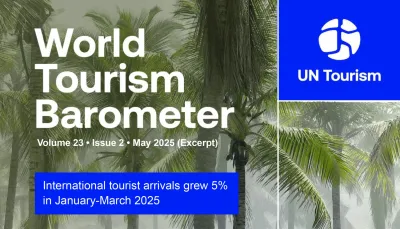U.S. Tourism Takes a Hit: Tariffs and Political Tensions Drive International Decline

The United States is bracing for a major downturn in international tourism, with a projected 9.4% drop in visitor arrivals for 2025. Once considered a top global destination, the country is now seeing a reversal in travel trends—fueled by stricter border policies and mounting diplomatic strain under President Donald Trump’s administration.
From Growth to Loss
Tourism Economics, which had previously forecast an 8.8% growth in international visitation, has revised its 2025 outlook drastically. The updated projection—nearly a 9.4% drop—could cost the U.S. up to $9 billion in lost visitor spending, as reported by.
This shift is not isolated to long-haul markets. The sharpest declines are coming from neighboring Canada and key European nations. Canadian tourism is expected to plummet by more than 20%, fueled by public backlash against U.S. policies. A recent Angus Reid poll found 62% of Canadians plan to avoid travel to the U.S. in 2025, while cross-border duty-free shops have reported revenue losses of up to 50%.
In Europe, Germany and Spain are each seeing double-digit reductions in outbound travel to the U.S., with airline capacity cutbacks confirming the trend.
Political Fallout
Analysts cite a direct link between political rhetoric, visa delays, and safety concerns as drivers of the decline. President Trump’s executive actions on immigration, trade tariffs, and perceived isolationism have contributed to an international image that many travelers now view as unwelcoming.
The sentiment extends beyond economics: LGBTQ+ travelers from Australia, for example, are canceling trips to the 2025 World Pride festival in Washington D.C., citing concerns over discrimination and safety.
Economic Ripple Effects
From New York to Las Vegas, the consequences are tangible. Hospitality jobs, retail stores, restaurants, and regional airlines are all feeling the pinch. Some budget carriers have already reduced flights to key markets like Florida and Arizona. The Washington Post notes that these patterns are emerging across both urban and rural destinations.
Why This Matters to Travel & Hospitality Stakeholders
For investors, startups, and corporate innovation leaders in the tourism sector, the U.S. market shift highlights the critical role of geopolitics in travel demand. It's also a wake-up call: traveler sentiment, visa policy, and international diplomacy are becoming as influential as pricing, marketing, and digital UX.
The decline offers two parallel messages: one of risk, as certain source markets cool—and one of opportunity, as regions like the Middle East, Latin America, and Southeast Asia emerge with less exposure to U.S. policy fallout and rising middle-class travel demand.
Looking Ahead
Restoring the U.S. as a favored international destination will require more than tourism campaigns—it demands policy recalibration and renewed global engagement. Until then, stakeholders across the travel innovation ecosystem should monitor regional demand shifts closely and diversify both inbound and outbound strategies.



